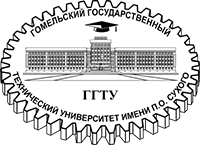Приведен сравнительный анализ института недостойного наследника в Российской
Федерации и Республике Беларусь через призму теоретических и практических аспектов.
Автор выявляет, что по законодательству Республики Беларусь, в отличие от законодательства Российской Федерации, у недостойного наследника отсутствует возможность восстановления права на наследство через завещание. Автором выносится положение об отсутствии четких критериев «противоправности», что порождает судебные
коллизии.
Анализируя судебную практику и обзор научных позиций, относительно ГК РФ и ГК РФ,
определяя одним из признаков недостойного наследника по ст. 1038 ГК РБ, автором выявлены
проблемы доказывания «злостности» по ГК РБ и предложены изменения в ст. 1038 ГК РБ
с учетом опыта Российской Федерации и ряда иных стран, а также предложено определение
понятия недостойного наследника.
This article provides a comparative analysis of the institution of an unworthy heir in the Russian
Federation and the Republic of Belarus, through the prism of theoretical and practical aspects.
The author reveals that under the legislation of the Republic of Belarus, unlike the legislation
of the Russian Federation, an unworthy heir does not have the opportunity to restore the right to
inheritance through a will. The author puts forward a provision on the absence of clear criteria for
“illegality”, which gives rise to judicial collisions.
Analyzing judicial practice and a review of scientific positions regarding the Civil Code
of the Russian Federation and the Civil Code of the Russian Federation, defining one of the signs
of an unworthy heir under Art. 1038 of the Civil Code of the Republic of Belarus, the author identi-
fied problems in proving “maliciousness” under the Civil Code of the Republic of Belarus and proposed changes to Art. 1038 of the Civil Code of the Republic of Belarus taking into account
the experience of the Russian Federation and a number of other countries.







